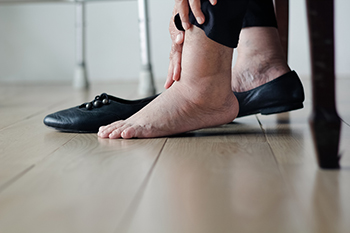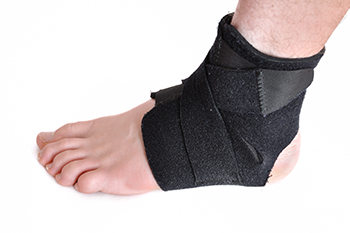
The feet can swell up in size and shape when they experience poor circulation. However, other things may cause the feet to swell. Namely, experiencing some kind of bug bite may make the feet swell. It is very common during the warm summer months for people to get mosquito bites all over their bodies, especially on their feet. If you are experiencing swelling on the feet from a mosquito bite, there are several steps that you may consider taking. To reduce and mitigate the extent to which your feet are swelling, you might consider applying an ice pack for a short amount of time to the affected area. About 10 minutes of application time might be sufficient. Generally speaking, the mosquito bite might also be washed with soap and water. Getting a mosquito bite on the feet shouldn’t be taken lightly if there is significant swelling. Contact a podiatrist today to learn more.
Swollen feet can be a sign of an underlying condition. If you have any concerns, contact Dean Kim, DPM of Greater Texas Foot & Ankle Specialist. Our doctor can provide the care you need to keep you pain-free and on your feet.
Swollen feet are a common ailment among pregnant women and people who stand or sit for extended periods. Aging may increase the possibility of swollen feet and patients who are obese often notice when their feet are swelling too. There may be medical reasons why swollen feet occur:
- Phlebitis - A condition that causes the veins to become inflamed and can also cause leg pain.
- Liver disease - This may lead to low blood levels of albumin which is a protein. This can cause fluid in the blood to pass into the tissues and several areas of the body can become swollen.
- Heart failure - When the heart doesn’t pump properly the blood that is normally pumped back to the heart can pool in the veins of the legs causing swollen feet.
- Kidney disease - One of the main functions of the kidneys is releasing excess fluid in the body. This type of condition can make it difficult for the kidneys to function properly, and as a result the feet may become swollen.
- Deep-vein thrombosis (DVT)- This is a serious condition where blood clots form in the veins of the legs. They can block the return of blood from the legs to the heart which may cause the feet to swell. It is important to be treated by a podiatrist if this condition is present.
Swollen feet can also be caused by bone and tendon conditions, including fractures, arthritis, and tendinitis. Additionally, there may be skin and toenail conditions and an infection may cause the feet to swell. Patients who take medicine to treat high blood pressure may be prone to getting swollen feet.
Many patients elevate their feet to help relieve the swelling and this is generally a temporary remedy. When a podiatrist is consulted the reason behind the swelling can be uncovered and subsequently treated.
If you have any questions please feel free to contact our office located in Frisco, TX . We offer the newest diagnostic tools and technology to treat your foot and ankle needs.






